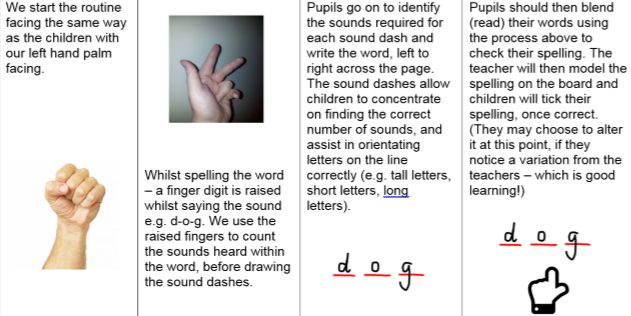Phonics


Phonics/Spelling at Victoria Primary Academy
At Victoria, we follow Rocket Phonics in EYFS and KS1, and Phonics International throughout KS2. The approach to teaching and learning is similar within both schemes, allowing our pupils the opportunity to develop their decoding (reading) and encoding (spelling) knowledge as they progress through school.
Rocket Phonics Teaching Sequence:

Rocket Phonics teaches one letter-sound correspondence over two days. The first day focuses on blending (reading) skills and the second day focuses on segmenting (writing) skills. Reading and writing are interlinked so there will naturally be overlap, but by separating the skills and spreading them across two days the teacher has greater clarity
over which skill is being taught, practised or applied. The children have more time and more opportunity to learn, practise and apply the skills using the new letter-sound correspondences before moving on. The two-day pattern is repeated twice through the week, leaving the fifth day as an opportunity for further consolidation, assessment, enrichment activities or as a focus lesson on common exception words.
Rocket Phonics Progression:
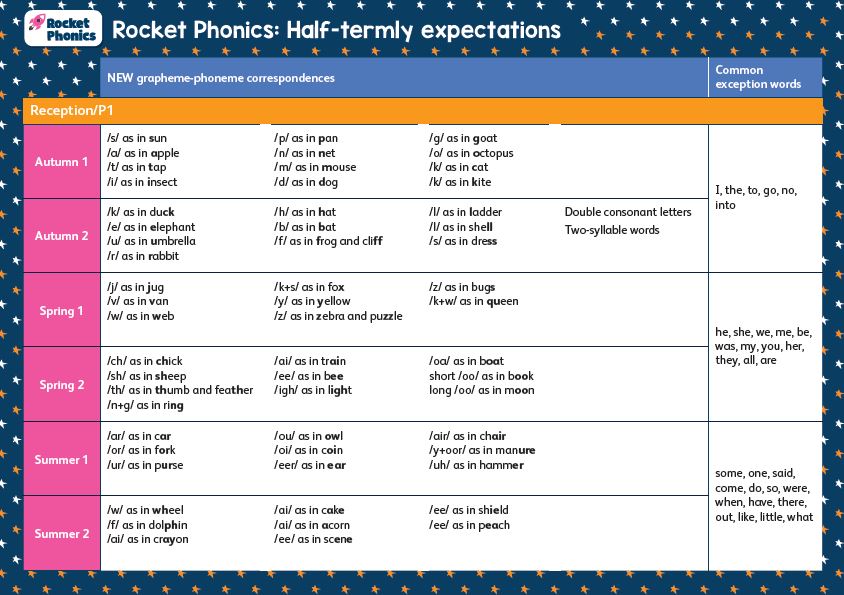
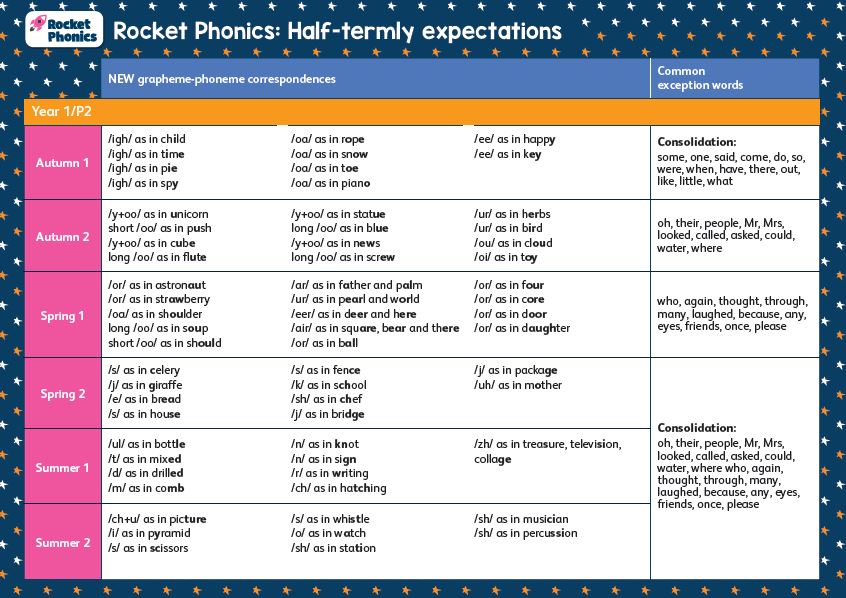
Phonics International Teaching Sequence:
Revisit and Review
We use flashcards to begin every session so that our children are confident in their recognition of the letters on the page, and those which they will select for writing. Each flashcard helps children to memorise each sound through use of a picture and a ‘code’.
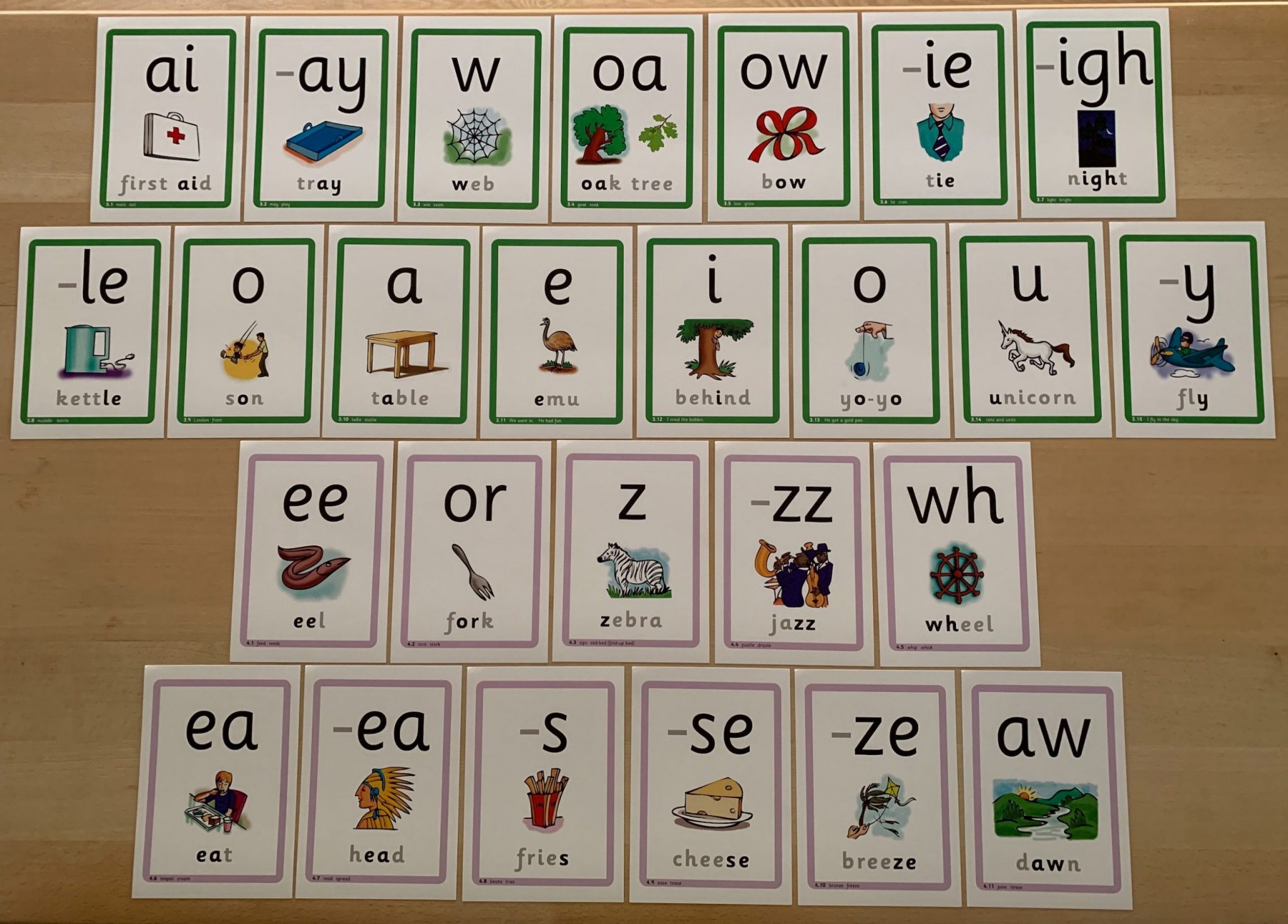
Teach
We use a flashcard to introduce the new sound(s) to pupils and we model the skill of blending using words on the back of the flashcard. The vocabulary used on the flashcards is progressive and challenging, to allow for a further opportunity to expose pupils to high level word choices.
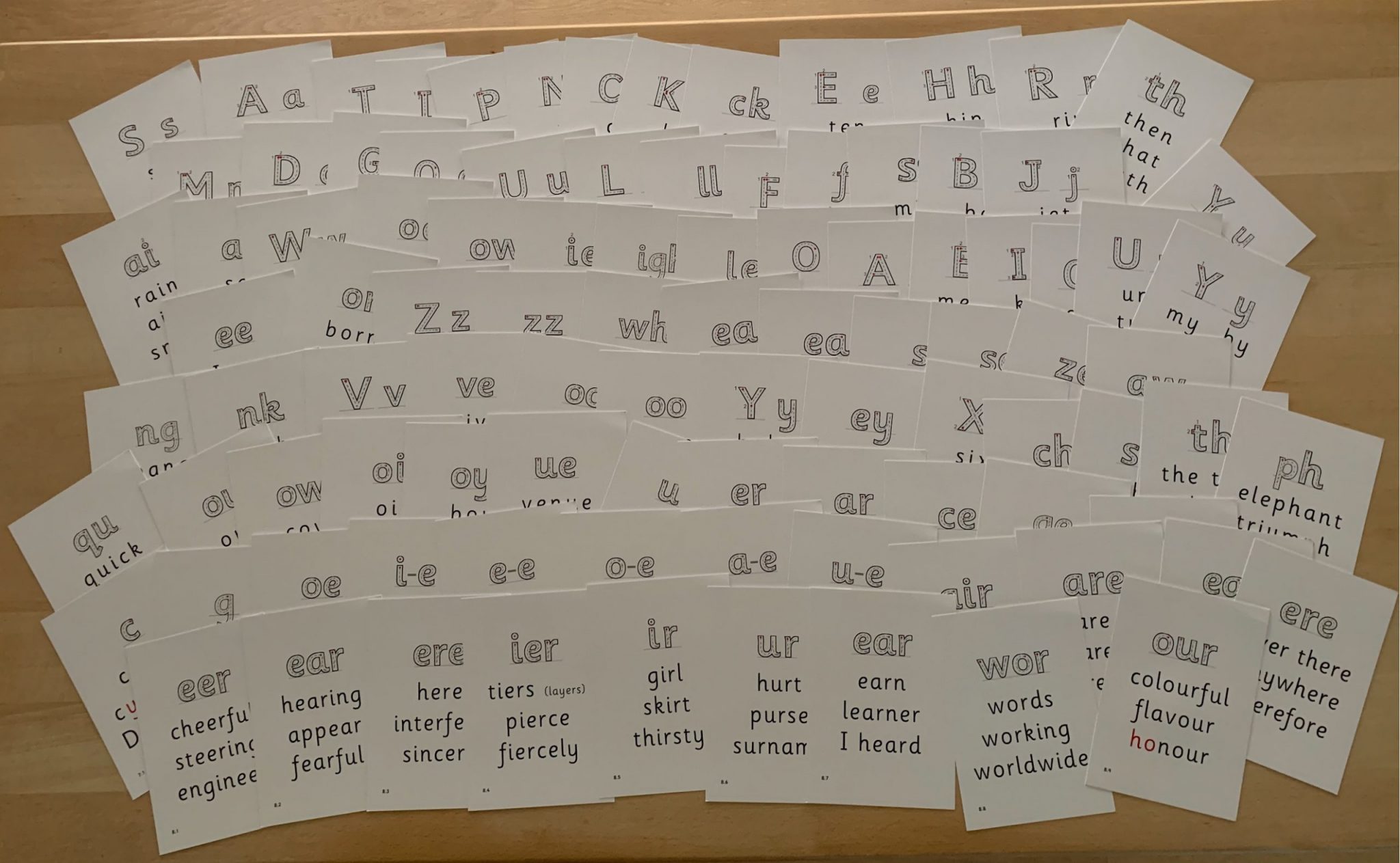
Apply
Phonics sessions are a vital part of every school day, with all pupils enjoying 30 minutes of phonics learning each day. The session is split into approximately 15 minutes reading (decoding), followed by 15 minutes of spelling (encoding). Pupils work independently throughout this session to complete sound activity sheets.

In the last 15 minutes of the session, pupils go on to practice spelling by sounding out the words they are told to spell by their teacher, following the spelling and editing routine. This routine is designed to enable children to hear and identify the correct number of phonemes (sounds) in words and encode them by selecting the corresponding (correct) graphemes.
